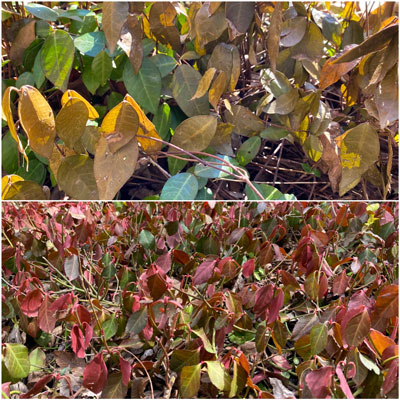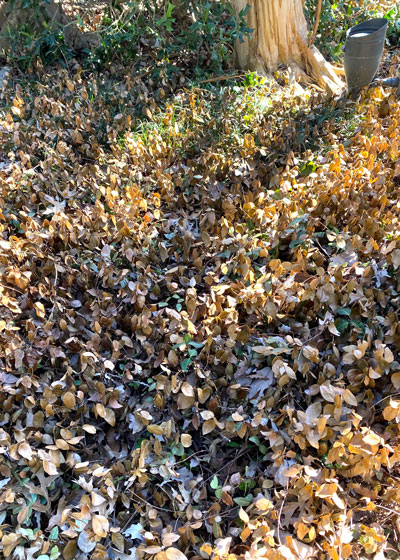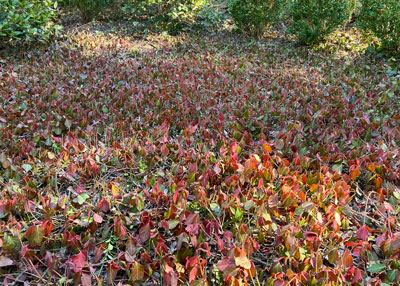Which Would Your Prefer?

These two groundcovers are essentially interchangeable. That is, unless you live in a cold part of Texas. Or Chicago, where I saw beautiful beds of purple wintercreeper euonymus right downtown when Lynn and I attended the National School Board Convention 10 or 12 years ago. Purple wintercreeper euonymus is tough!
But can it hold up to the Texas sunshine and summer? Yes! And it may even survive drought just a little bit better. It won’t grow well, of course, unless you water it, but where Asian jasmine folds up its leaves and dies when it’s dry, purple wintercreeper seems to be better able to bounce back if you get water to it quickly enough.

So, let’s compare them just a little bit more. Both plants mature at 6 to 7 inches tall. You can keep them at 4 or 5 inches if you trim them at the beginning of each growing season – just before their flush of new growth pushes out for the spring.
Both are planted from 4-inch and 1-gallon pots. I space mine 15 to 20 inches apart in a checkerboard pattern. I prepare their planting bed by killing existing weed grasses with a glyphosate spray. I wait two weeks, then I rototill and incorporate 3-4 inches of compost, finely ground pine bark mulch, rotted manure and other organic matter into the top 8-10 inches of soil.
I try to do my planting in late March or April so I can take advantage of that spring growth. The first year I move the runners so they cover the ground in all directions. I do very little pruning. If any weeds start growing (and they will), I pull them out by hand or with a hoe.
The second year I try to get either groundcover to complete its job of covering all of the soil. The third year they begin to develop depth to the planting, and by then I’m needing to use my line trimmer to keep things evened up.

Both plants do best with the same type of fertilizer you apply to your turfgrass (no weedkiller included), and each will grow best if you keep the soil consistently moist. If bermudagrass should pop up in either, spot-spray carefully with a glyphosate-only weedkiller applied directly to the bermuda. You’ll need to be more careful around the wintercreeper with the herbicide than you will in the jasmine. It is more tolerant of the overspray.
I have never had any type of insect or disease at all on Asian jasmine in 60 years of growing it. On one occasion I have seen euonymus scale on my wintercreeper, but that was when it managed to grow up a tree trunk. I’ve always assumed that the high temperatures at ground level discouraged development of the insects in groundcover settings.
As for the name “purple wintercreeper…”
This plant is deep green from mid-March through the first hard freeze. When winter arrives, though, its leaves turn lovely maroon. It blends well with nandinas and several other plants that transition in colors. In doing that, it provides nice seasonal interest.
Sperry Summary…
All the new sunny groundcover beds I’ve put in at our house in the past 20 years have been purple wintercreeper. I’ve loved this plant, and I’ve been recommending it since 1985-ish. It’s been fun to see it coming of age. I still have lots of Asian jasmine, and they make a nice tandem team, but this is my new rock star.
